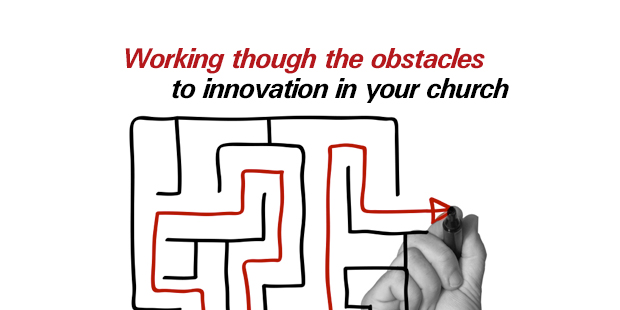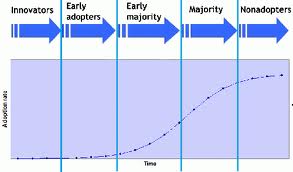
Working Through the Obstacles to Innovation in Your Church
Providing leadership in a church setting always necessitates change. Change implies something is going to be different in the future. While change and innovation are not always synonymous, they can often be used interchangeably – like in the following post by Innovation Expert Tim Kastelle. He encourages leaders to first recognize the obstacles to innovation, and then gives four ideas to help overcome these obstacles.
Obstacle 1: Competition
Probably the most common question I get about this blog is “how do you find time to write it?”
It’s the same question that I used to get about reading – where do I find time to read books?
The answer to both is the same – I make time. One of the ways that I make time is that I don’t watch much television anymore.
You wouldn’t think that writing a blog has competition, but it does. In order to write a post, I have to not be doing other things with my time. So as I’m writing this, I’m not watching The Wire, even though nearly every single person I know has told me that I must. And I’m not reading either.
If something as simple as writing a blog post has competition, then clearly you will always have competition for something as significant as moving forward with a new idea.
So that’s one big obstacle to getting your great new ideas to spread – even if there is no obvious competition, you’re competing for time, or attention, or money, or…
Obstacle 2: People that are hurt by your idea
No matter how great our idea is, or how beneficial, some people will be made worse off when it’s executed.
We like to think that our new ideas are benign, or only beneficial.
There are always innovation winners and losers. Just as it’s important to think broadly about competition, it also pays to think broadly about who might lose when your innovative idea is executed.
Obstacle 3: Time
The first two obstacles both contribute to the third one: new ideas always spread more slowly than we expect. New ideas always spread though an S-Curve:
The time it takes to work through the innovation takes time – and that often takes people by surprise. It is a slow process because it takes time for people to hear about new ideas, it takes time to evaluate them, and it takes time to decide to adopt them. Once all that happens, it often appears as though successful ideas are overnight successes, but that’s only because they’ve finally hit a tipping point.
How to work through these obstacles
The first issue is that you need to be aware of them. The idea diffusion s-surve is a research finding that has been consistently supported for 60 years now – it’s is one of the most robust ideas in management research. Yet it is still often misunderstood – just ask Kodak.
Here are four ideas for addressing this issue:
- Think about timing. You have to think about the timing of your idea. If you are still at an early stage in the diffusion process, all of your attention must go to getting your idea to spread. The right idea at the wrong time is still wrong. This means that you need to think about things like your network of supporters, and how to best take advantage of them to spread your idea.
- Early ideas need little bets, not big ones. When we face an uncertain future, as we do at the start of the innovation diffusion curve, then we need to try to influence the future through experimenting. The problem with big bets at this point in time is that they assume that we know how everything needs to work. When we’re in time X, we don’t know this – we have to discover it.
- Think about competition. And think about it broadly. Competition for time, attention and money will all slow the spread of a new idea. If people aren’t using your idea, what are they using instead?
- Think about who loses. This is another source of resistance. The competitors that we just considered are one source. But also, whose routine does the new idea disrupt? People trying to maintain their current routines are a powerful force preventing the diffusion of new ideas. You need to overcome this as well.
People often think that having a great idea is the hard part of innovating. Most of the time, this isn’t the problem. Getting the new idea to spread is.
If you’re serious about innovating, you will recognize – and work to overcome – the obstacles in front of you.
Read more from Tim here.

Tags: Innovation, Leadership Engine, Tim Kastelle













